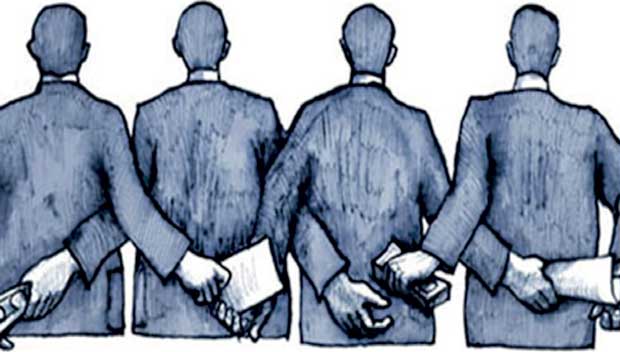01 Mar 2017 - {{hitsCtrl.values.hits}}

By Gambhir Bhatta
Transparency International’s 2016 Corruption Perception Index (CPI) generated the usual chatter. Countries that performed well congratulated themselves; countries further down the list decried the results as unscientific and biased.
Rankings are always interesting, but it is more useful to think about the bigger picture of how corruption and mismanagement really need to be viewed. Making sense of the perception as it relates to how governments should indeed interact with their citizens, or how they should put in place measures to help achieve the Sustainable Development Goals (SDGs), merits much more attention.
There are two main observations that should help put things in perspective about the CPI, an annual ranking of countries according to their scores on perceived levels of corruption on a scale from 100 (very clean) to 0 (highly corrupt).
Plus ça change
First, while the index is effective in getting people talking about corruption, over time the scores themselves have lost some of their power. It is not a question of who is perceived to be the best. Since 1995, there have only been nine countries that have consistently occupied the top five spots, with The Netherlands breaking into the ranks in one year. So, in that sense, little changes.
Of the three countries in Asia and the Pacific that are not considered middle-income countries—Nepal, Cambodia, and Afghanistan—since 2010 their scores have not improved substantially at all and remain at the lower end of the table.
It is also interesting that until 2013, Bhutan was the only Asian Development Bank (ADB) developing member country ranked in the top 50, and its score has remained the same at 65 for the past three years. Since then, only Georgia has joined Bhutan in the top 50. Also, at the opposite end of the spectrum, 22 of the bottom half of countries were in developing Asia, up from 21 in 2015 and 19 in 2014.
What you can do
Second, there is a fixation on corruption in the public sector and that too in less developed countries. But this is not the whole story. There is substantial evidence that corruption is not limited to the public sector. Instances of unethical behaviour, corporate mismanagement and the “normalization of corruption” reflect deep public mistrust in the private sector.
In Europe, Airbus is facing a criminal investigation into allegations of fraud, bribery and corruption in its passenger jet business. Airbus’ export credit agency support has declined in recent years but the issue is still troubling.
The Norwegian oil fund (at US $ 850 billion in assets the world’s largest sovereign wealth fund) announced last year it was reviewing its holding in the Brazilian state-owned oil company Petrobras because of continued risk of “severe corruption” in its operations in Angola, Nigeria and Venezuela.
Elephant in the room
Scores and rankings mask the real debate on how governments should improve systems that continually engender such poor performance.
If there is one main message from the Panama Papers scandal, it is that corruption is an extremely serious problem. The UN estimates that corruption, bribery, theft and tax evasion cost developing countries about US $ 1.26 trillion each year.
And while that is a telling statistic at the macro level, consider how corruption undermines everything that countries do to uplift the lives of the poor – to provide basic healthcare, social services, education, drinking water and keep communities safe. It undermines efforts by governments and development partners alike to meet the SDGs.
Estimates of annual infrastructure investment needs in developing Asian can reach toward US $ 2 trillion. Mobilizing such a huge volume of investment will require a substantial role for public sector or state-owned enterprises (SOEs).
SOEs’ share of global market capitalization is already almost 20 percent (up from 13 percent or so in 2013), and 10 percent of the world’s 2,000 largest firms are SOEs. Of these, more than half are in developing Asia, including 70 in the People’s Republic of China and 30 in India. Globally, SOEs tend to have high debt-to-equity leverage ratios and much lower return on assets than private firms.
OECD research suggests they are also prone to involvement in corruption. SOE officials and employees were bribed in 27 percent of 224 cases analysed by the OECD from 1999-2012, receiving more than 80 percent of total bribes. This shows that getting a handle on the proper governance of SOEs is critical.
Change the narrative
Instead of waiting for annual corruption scores and rankings, we should focus our attention on how governments can put in place actions that will begin to address the underlying causes of such perceptions. Changing this narrative will ensure that governments and citizens can make more sense of these figures in the future.
(Gambhir Bhatta is Technical Advisor (Governance), Sustainable Development and Climate Change Department at Asian Development Bank)
25 Nov 2024 1 hours ago
25 Nov 2024 2 hours ago
25 Nov 2024 2 hours ago
25 Nov 2024 4 hours ago
25 Nov 2024 4 hours ago